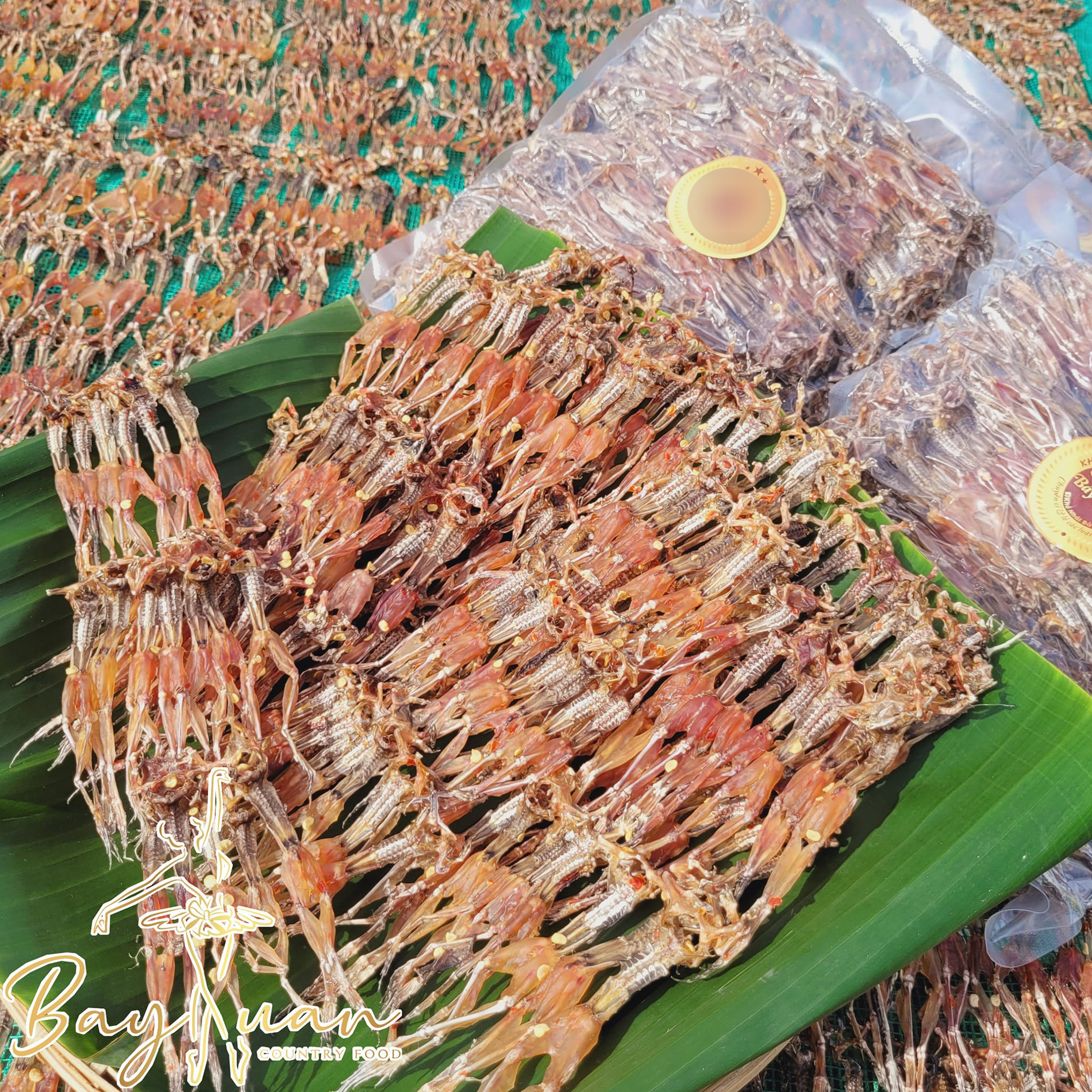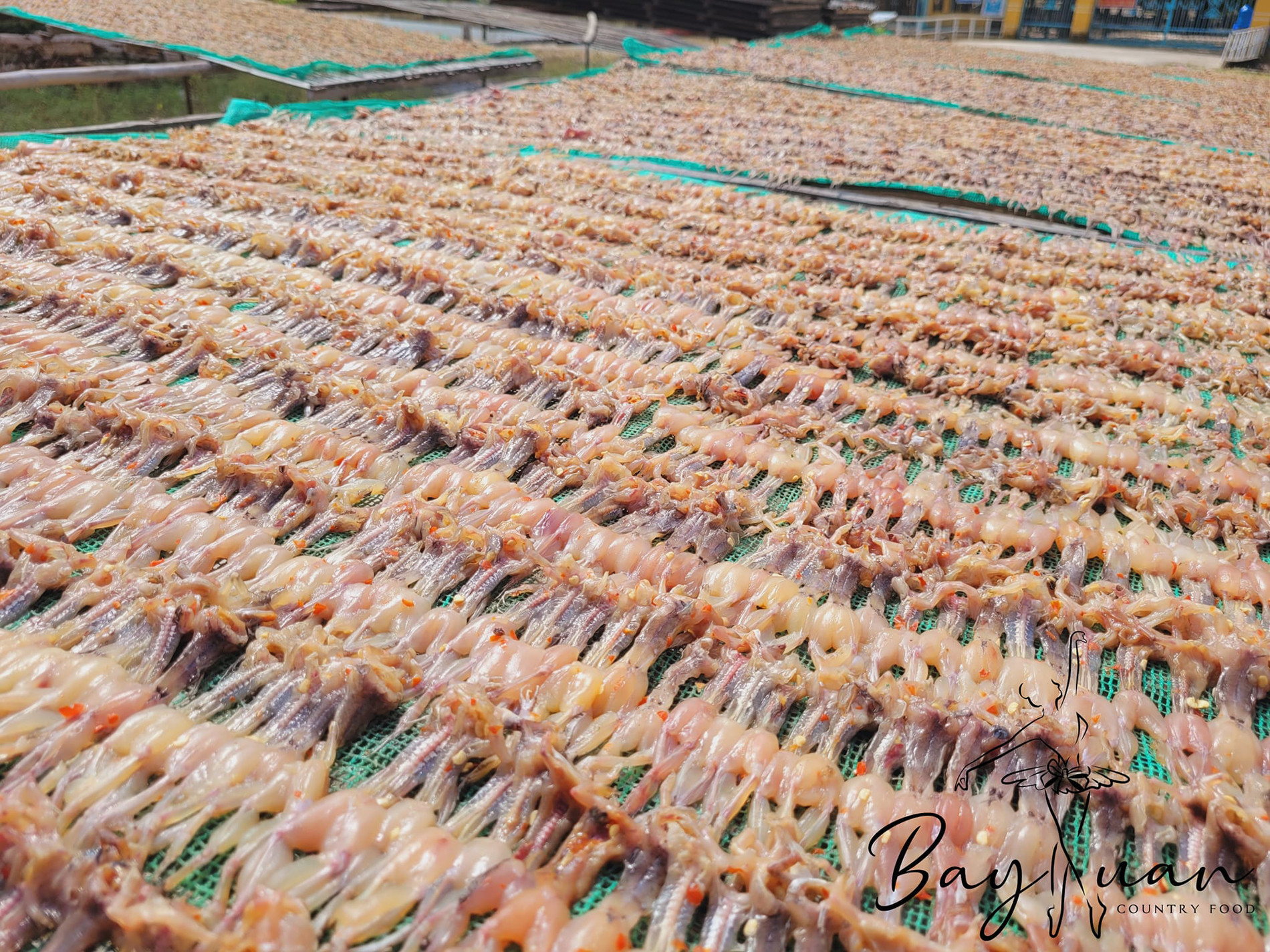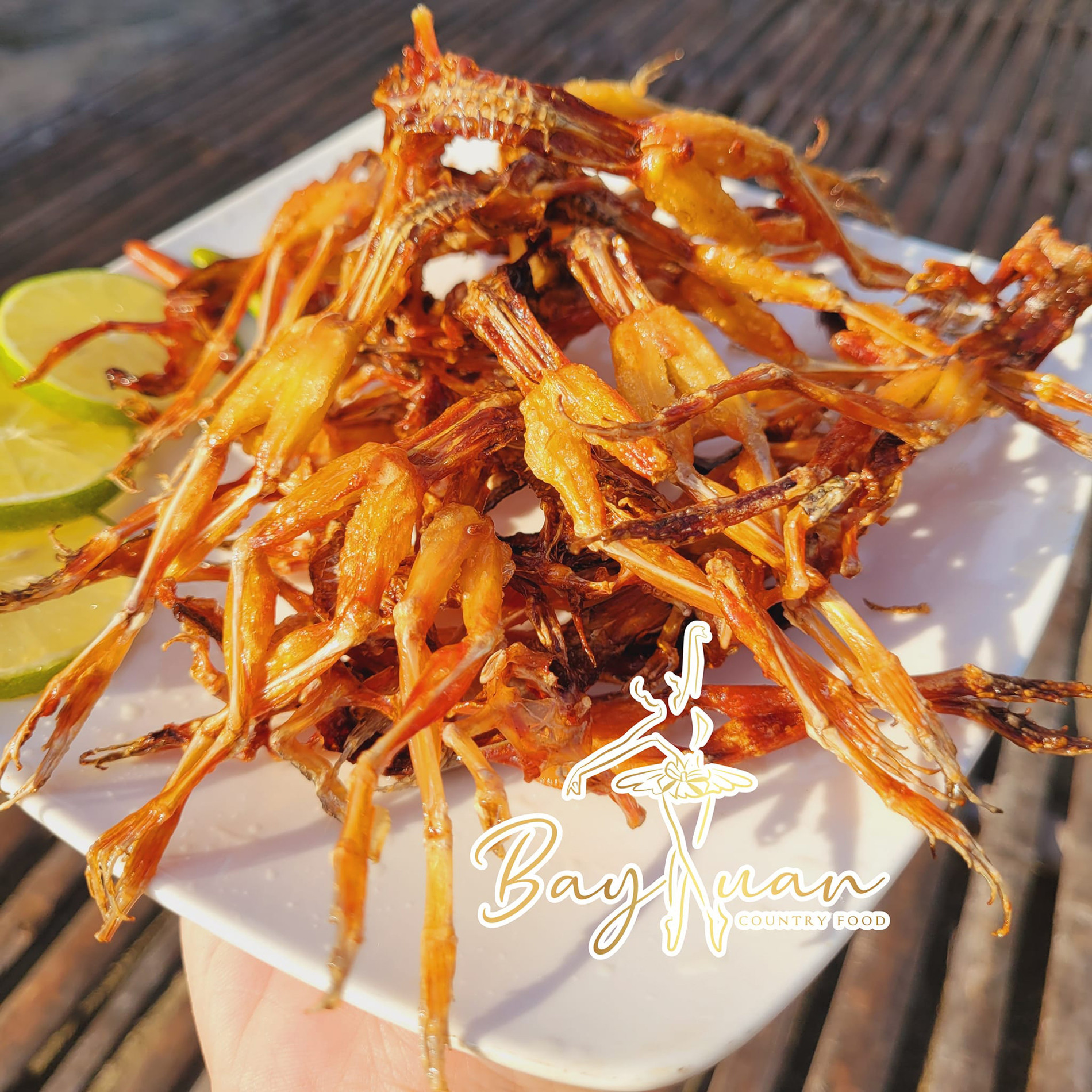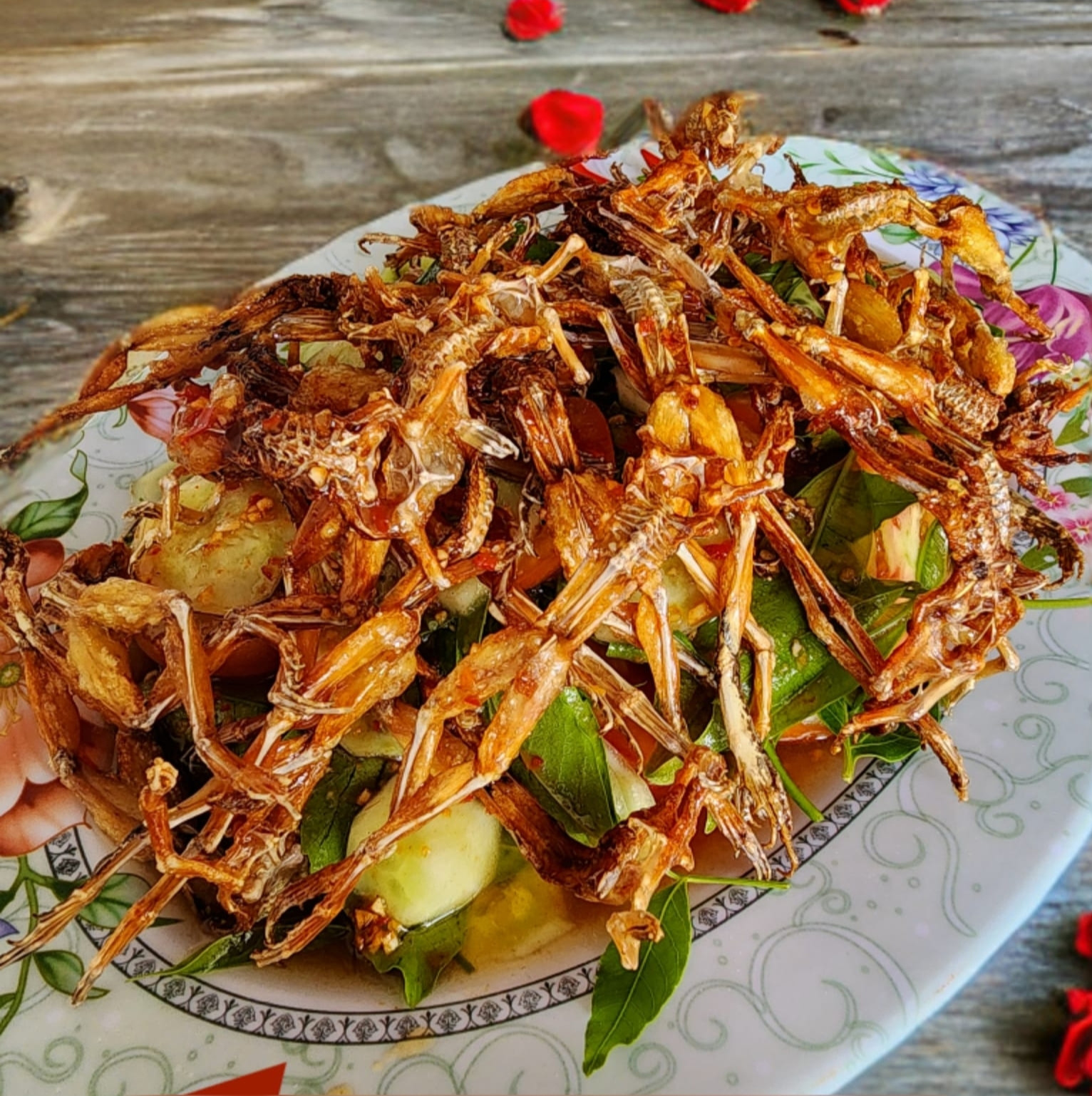The "long-legged dancer" is another name for dried frog, or "kho nhai." This dish is available in various provinces across the Mekong Delta, but it is most popular in An Giang.
According to locals, dried frog originated in Cambodia. When it was introduced to Vietnam, skillful cooks in the Mekong Delta transformed it into a famous delicacy that has become a regional specialty.
Dried frog is available year-round in the Mekong Delta, with peak production from May to November. This period coincides with the rainy season, when frogs thrive and multiply. During this time, locals gather to catch fresh frogs to dry, preparing for the peak demand season around the Tet holiday.

The dried frog, with its straight, slender legs, is often compared to a graceful "long-legged dancer."
Speaking with VietNamNet, Tran Thi Xuan (64), the owner of a well-known dried frog production facility in Tinh Bien District, An Giang, explained that due to the decreasing availability of wild frogs, local producers have to import frogs from Cambodia to meet demand.
There are two types of frogs: "nhai com" (small, firm-fleshed frogs) and "nhai lai" (larger hybrid frogs). The smaller "nhai com" variety is more popular as its firm flesh and edible bones are highly sought after by customers.
Preparing high-quality dried frog involves meticulous processing, considered the most time-consuming step. Fresh frogs are skinned, gutted, cleaned, marinated, and then sun-dried.
The spices for marinating the frogs are familiar and easy to find, such as pepper, chili, salt, and MSG. However, each household has its unique recipe to create a flavorful and fragrant finished product.

“Preparing the frogs requires careful handling since wild frogs can carry diseases and parasites. Additionally, they must be thoroughly cleaned to ensure the dried frogs are free from unpleasant odors or spoilage,” Xuan shared.
Sun-drying the frogs requires experienced timing to achieve the best flavor and texture.
According to Xuan, the weather is a key factor in the quality of dried frog. The frogs are only dried on hot, sunny days, ideally for two days, to ensure lasting flavor and extended shelf life.
Sun-drying also requires skill, as insufficient sunlight leaves the frog with a musty smell, while too much dries it out, affecting the flavor and tenderness. On average, it takes 4-6 kg of fresh frogs to produce 1 kg of dried frog.
Smaller frogs take longer to process, and since all stages are done manually without machinery, production volume is limited. Consequently, dried frog prices are relatively high, ranging from VND 350,000 to 600,000 per kg, depending on the type. During peak season, prices can reach around VND 800,000 per kg, yet the delicacy remains popular.
 |
 |
 |
Photos by: Bay Xuan Dried Frog
"‘Nhai com’ dried frog can be several times more expensive than beef and is as pricey as lobster, but it’s still in high demand due to its attractive appearance, firm and mildly sweet meat, and edible bones," shared Nguyen Van, who serves dried frog at her restaurant in Ho Chi Minh City.
Van noted that crispy fried dried frog is one of the easiest dishes to prepare and preserves the original flavor, making it a favorite among diners.
When eaten, diners enjoy the chewy, mildly sweet meat and the crunchy bones. The fried frogs are delicious when dipped in fish sauce or chili sauce.
Thao Trinh